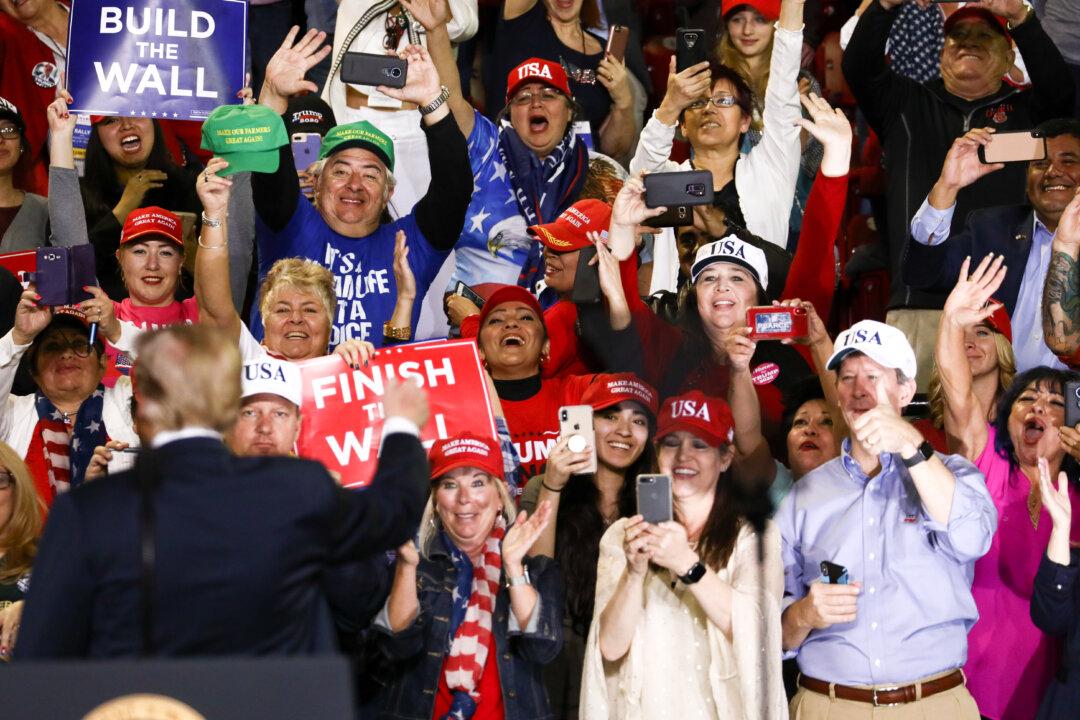The largest voting minority group in the 2020 elections likely will be Hispanic Americans, who are on track to outpace African Americans for the first time in U.S. history, recent data from the Pew Research Center found.
The projection is a positive sign for President Donald Trump’s 2020 prospects. Under his presidency, Hispanic unemployment broke multiple record lows and Trump’s approval rating among the demographic has reached 50 percent, according to a number of recent major polls. An increasing number of Hispanics also have indicated support for the U.S.–Mexico border wall, while Hispanic turnout at Trump’s recent MAGA rallies has soared.





